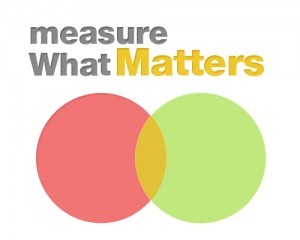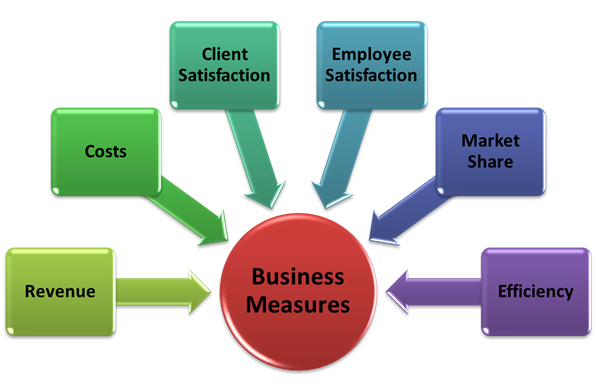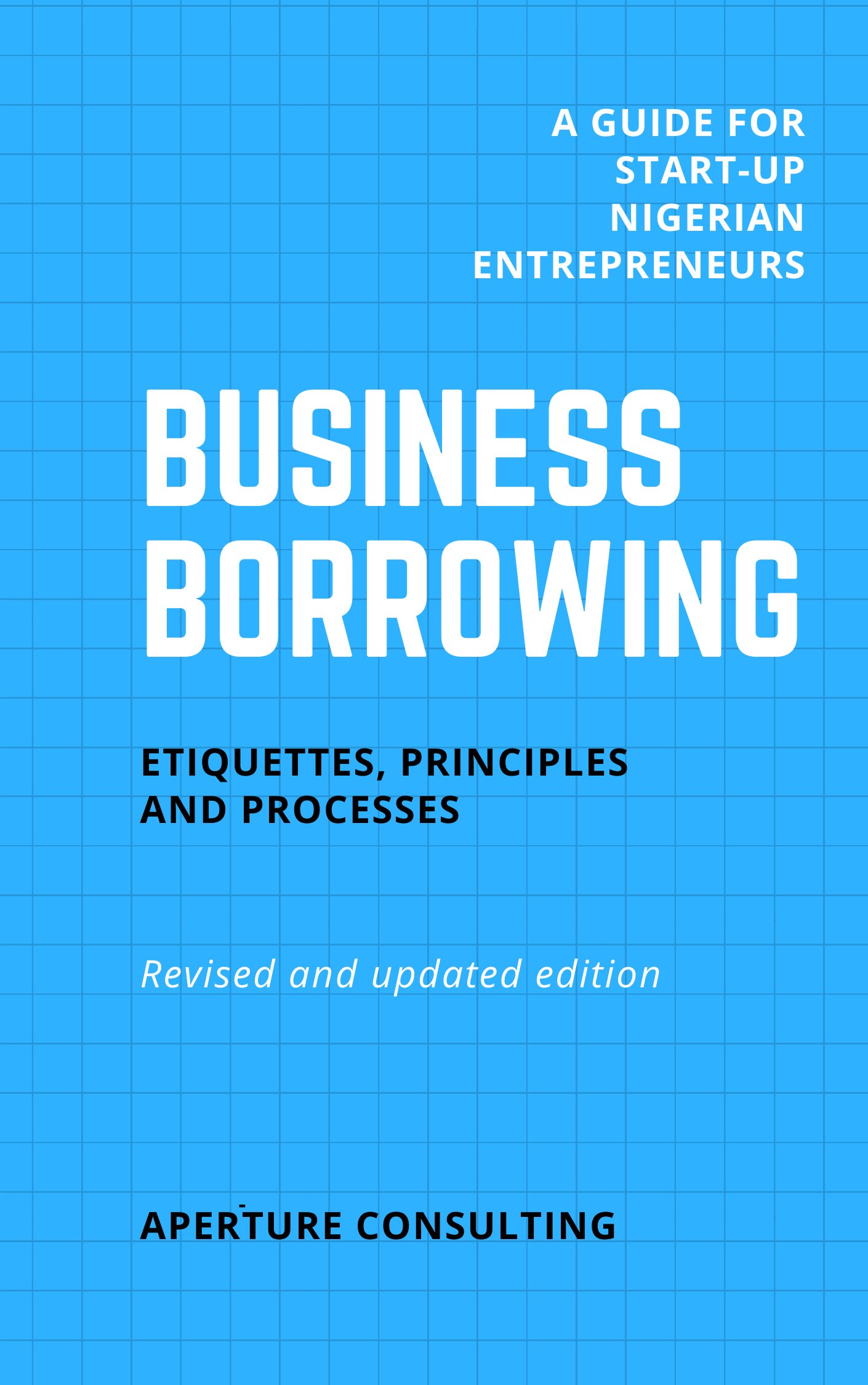 “You get what you measure. Measure the wrong thing and you get the wrong behaviours.” – John H. Lingle
“You get what you measure. Measure the wrong thing and you get the wrong behaviours.” – John H. Lingle
We have mentioned severally in other posts that business entails handling a lot of details. Furthermore, the typical entrepreneur and his managers are constantly receiving massive amounts of information on a daily basis. It therefore becomes a challenge to process this information and act on it in a way that it yields the desired results efficiently. As an entrepreneur you need to realize this from the very beginning, and like larger and more successful organisations, you must be able to identify and focus on the details that really add value to your enterprise and your customers. How can you do that?
Your ability to focus on implementation of strategy will only be made possible if you first identifying the key drivers of your business. For this, you need more than clear strategic vision. You will need implementation. To excel in implementation, you and your people must understand and identify the following:
- Which variables, factors and actions (let us call them ‘drivers’) impact your strategic goals,
- How do these drivers impact on each other, and
- How do they impact your strategic goals,
Your ability to identify and measure these key drivers is the subject of business metrics. The other side of the coin, obviously, is the application of this knowledge in adding value to business operations. We can therefore define a business metric as any measure used to gauge some variable component of a company’s performance. This may include such measures as Customer Retention, Inventory Turnover, Profitability, etc. Total Quality Management, Six Sigma etc., are all derivatives of metrics management. They helped Volkswagen reduce supply chain costs and helped General Electric streamline into ‘core’ businesses that the company has competitive advantages in. No matter the size of your business though, the application of business metrics management, within your context, will help you succeed in no small measure. And no matter the metrics system you adopt, you have to keep in mind that the fundamental objective is to help you focus attention on the essential levers that drive your corporate performance. The advantages of a robust metrics measurement system include:
Clarification of strategic objectives: The process of implementing a good working metrics measurement system in your business will ‘force’ you to go through details of your strategic objectives. Any ambiguities will likely be thrown up and resolved,
Clarifies operational aims: The process will also help you clarify operational details. Remember, the devil is in the details,
Monitors performance: Helps you create a clear picture of how your business is doing. Managers will be able to know exactly how the business is doing on a periodic basis (daily, weekly, monthly, bi-annually, annually etc),
Guides you to take proactive measures in managing your business: Knowing what is going on will enable you take proactive measures to seize opportunities or contain threats,
Frees up time: Knowing exactly what to focus on frees up time for you to be involved in taking on more important strategic issues and challenges,
Rewards value creation: You will be able to reward exactly what creates value, thereby enhancing your chances of success and motivating your staff further,
Strengthens business intelligence: It provides robust business intelligence that can be internalised and properly applied into operations to create more value,
Reduces transaction costs and increases performances: Clarity reduces your costs of transactions and paves the way to performance increase.
How do you create a metrics system in you enterprise?
Identify the key metrics relevant to your business : You will need to review all details of your operations and understand how they uphold your strategy. Identify all business drivers and the significance of each. Furthermore, assess the impact of each driver on other drivers and on the overall performance of your enterprise. Based on the results of this review, you should be able to come up with the key drivers that impact your business performance; how they affect the overall business results; and how as an enterprise, you can enhance your capability to create more value by focussing on the drivers.
Certain information such as, for example, sales revenue over a particular period can be a required metric for virtually all types of businesses. However, you will need to identify the particular metrics relevant to your own business, situation, environment and circumstances. Realise also that certain metrics will be attributable to a department or unit of your business whilst some other metrics will be attributable to other units or departments. It should also be clear that certain ‘sub-drivers’ will affect other drivers in one way or another whilst the driver itself affects the overall/required results. You will need to clearly identify all these.

Avoid inconsistent measures (that pull in opposite directions) and do not put too many measures that will result in loosing your or your managers’ focus. Furthermore, it is important not settle for only financial measures as there are many non-financial measures that greatly influence performance. You need to also include forward looking indicators that will ensure capacity building, brand enhancement etc. This is to ensure that you do not restrict your performance to short-term results only. Identify all these measures.
A number of metrics could be relevant, such as : Sales Revenue, Gross Margin, Inventory, Overhead Costs, Monthly Profit, Hours Worked per Process, Cost of Customer Acquisition, Lifetime Value of a Customer, Customer Satisfaction, Customer Retention, Employee Commitment etc. Identify those most relevant to your business and plan how you can capture them.
 Broadcast and entrench the metrics in your enterprise: The process of identifying key performance drivers should not be a unilateral executive management discretion. As much as possible, discussions and analysis should be robust across levels and functions. All participants should be made to realise the importance of the process, and at the end of the day, the objective is to identify the real drivers of value and performance. Notwithstanding the extent of discussions though, you still need to educate all stakeholders to understand the relevance and significance of each metric. Whatever the situation, any person(s), unit(s) or department(s) responsible for a metric/metrics should understand, accept and live by it. You need the understanding and buy-in of all stakeholders for the system to work well and provide the chance to create value for your customers and enterprise. If you succeed in entrenching the use of the good metrics you will be well on your way to turning your company into a high performance and value creation entity.
Broadcast and entrench the metrics in your enterprise: The process of identifying key performance drivers should not be a unilateral executive management discretion. As much as possible, discussions and analysis should be robust across levels and functions. All participants should be made to realise the importance of the process, and at the end of the day, the objective is to identify the real drivers of value and performance. Notwithstanding the extent of discussions though, you still need to educate all stakeholders to understand the relevance and significance of each metric. Whatever the situation, any person(s), unit(s) or department(s) responsible for a metric/metrics should understand, accept and live by it. You need the understanding and buy-in of all stakeholders for the system to work well and provide the chance to create value for your customers and enterprise. If you succeed in entrenching the use of the good metrics you will be well on your way to turning your company into a high performance and value creation entity.
Create a measurement system: Having identified your relevant metrics and educated your stakeholders, the next challenge is to set up a metrics measurement system. This system should cover the broad area of business intelligence, including collecting, storing, analyzing, and providing the processed data to help you and your managers make better business decisions. Some of the information will be readily available from your internal sources whilst some will be obtainable from outside the organisation. You will have to identify the source(s) of each information and arrange to collect and process it timely.You have to transform your organisation’s mission statement and business strategy into specific and quantifiable goals, and be able to capture and measure them. Managers that should receive the information should be identified and the frequency with which the information is to be provided and the timing should all be set. Some information must be made available daily (for instance the units of production should be known by the Production Manager on a daily basis). Some other information may be required on a weekly basis (for instance sales information to the Sales Manager). Decide what works for you, but remember that timeliness is key.
As a team, you will also need to regularly meet and review your business state of affairs. Recognise when you are doing well and acknowledge when you are lagging behind. Such performance review meetings should not be allowed to degenerate into a blame and defence sessions. They should be intellectual discussions based on facts and results.
Reward Performance: Once you identify your key business drivers, you will need to tie rewards to the achievement of targets. All individual staff, units/departments and managers must be clear about exactly what yardsticks will be applied to assess their individual and group performances. You will also need to identify and educate how managers and business units can focus on respective drivers with a view to achieving overall corporate goals. It is also important to regularly review how individuals and teams are doing as regards the set criteria. Waiting until the end of review period will be costly, counterproductive and will make corrections difficult if not impossible. Ensure also that staff and groups are rewarded as agreed as per their set targets. You can not afford to loose the confidence of staff that have made commitments and achieved what has been pre-set. Sometimes obviously, you may be required to re-asses performance criteria. But this should be discussed with, understood and agreed by all parties that may be involved.
Continuous improvement: In whatever you do, including the implementation of business metrics measurements, ensure that you regularly review what you are doing with the sole objective of seeking ways to improve it. Even when it is working very well, keep checking what you are doing and what the competition is doing, and ask yourself the tough questions: what can we do better ? and how can we do it? Remember:
“What’s measured improves” ― Peter F. Drucker














